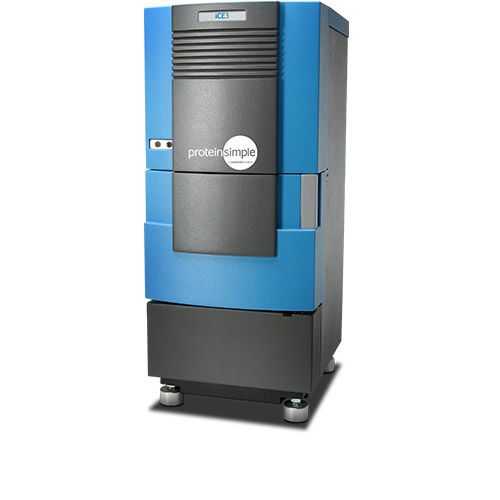
Capillary electrophoresis system iCE3isoelectric focusingfor proteinsbenchtop
Add to favorites
Compare this product
Characteristics
- Technology
- capillary, isoelectric focusing
- Applications
- for proteins
- Configuration
- benchtop
Description
Protein charge heterogeneity analysis in 10 minutes
iCE3™ lets you move beyond the limits of traditional protein analysis and fast-tracks your development timelines. 10-minute start to finish run times let you optimize method conditions in an afternoon. As an added bonus, you can use the same generic method for multiple molecules—no need for product-specific methods.
iCE3 gives you high resolution, quantitation and automation without the hassles that come with other capillary IEF protein separation techniques. It'll analyze your toughest samples and most challenging proteins with ease.
FAST-TRACK YOUR DEVELOPMENT TIMELINES
iCE3's 10-minute start to finish runs with the HT Cartridge lets you optimize charge heterogeneity method conditions in an afternoon. You can also use the same platform method for multiple molecules—no need for product-specific methods. That means you can standardize platform methods across product development and QC, so you'll save time and costs and get robust and reproducible data.
How does it work?
Protein samples are first premixed with carrier ampholytes, additives and pI markers. Samples are separated in a capillary cartridge with electrolytic tanks at each end—one tank is filled with acid (anolyte) and the other base (catholyte).
The sample mixture is injected to fill the entire capillary column. Voltage is then applied to the anolyte and catholyte tanks. This creates a pH gradient, which separates and focuses the proteins based on their pI. The whole-column UV detector monitors the entire process in the capillary in real time.
Catalogs
No catalogs are available for this product.
See all of ProteinSimple‘s catalogsRelated Searches
- Electrophoresis system
- Benchtop electrophoresis system
- Particle size analyzer
- Protein analyzer
- Automated protein analyzer
- Laboratory protein analyzer
- Benchtop protein analyzer
- Protein electrophoresis system
- Pharmaceutical industry particle size analyzer
- Capillary electrophoresis system
- Isoelectric focusing electrophoresis system
- Fluorescence protein analyzer
*Prices are pre-tax. They exclude delivery charges and customs duties and do not include additional charges for installation or activation options. Prices are indicative only and may vary by country, with changes to the cost of raw materials and exchange rates.




